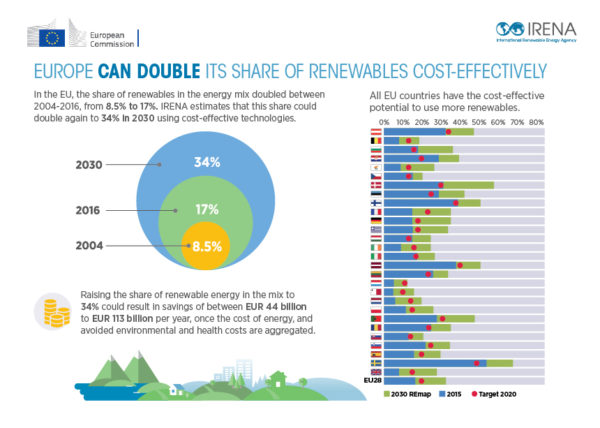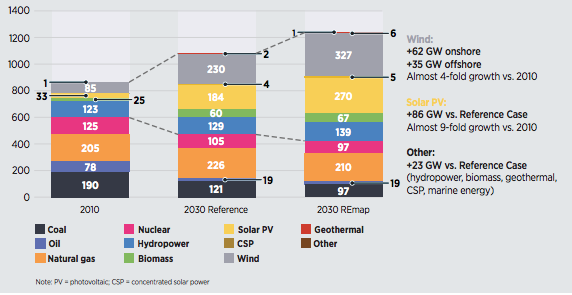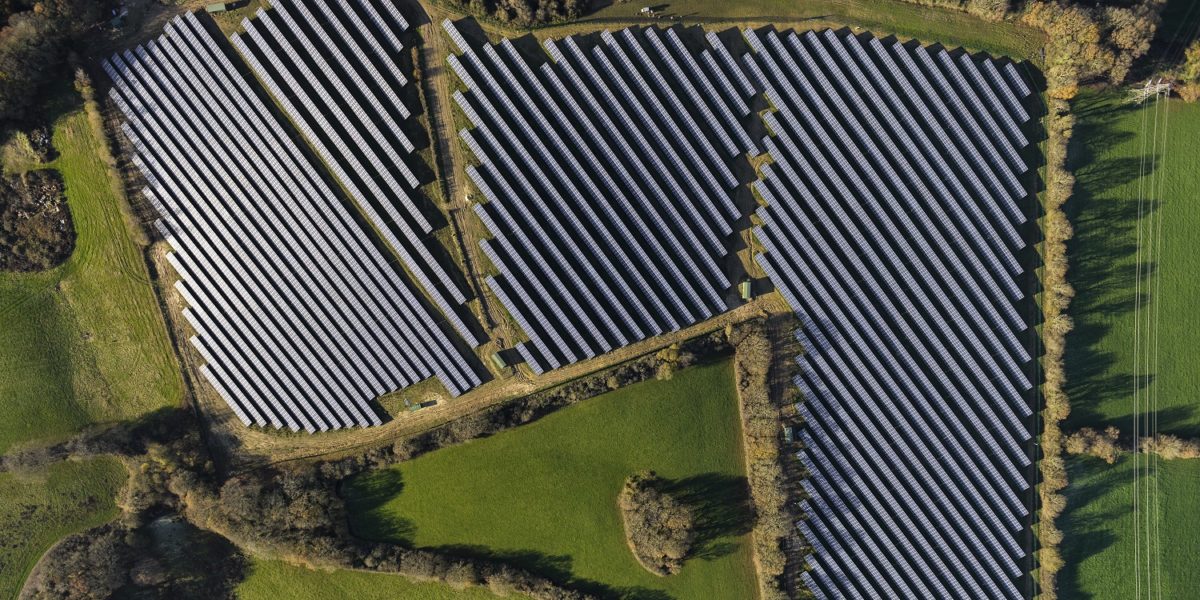With the rapid reduction in deployment costs of solar PV and offshore wind, the renewable energy (RE) potential that can be harvested cost-effectively across the European Union has dramatically increased, turning the 27% renewable target agreed in 2014, into a conservative objective.
While the European Parliament recognized renewable’s potential and upped the 2030 RE target to 35%, the latest IRENA report titled Renewable Energy Prospects for the European Union shows that doubling the 2014 Winter Package RE target by 2030 can be achieved cost-effectively, and with significant economic value, due to the associated health and environmental benefits.
“For decades now, through ambitious long-term targets and strong policy measures, Europe has been at the forefront of global renewable energy deployment,” said IRENA Director-General, Adnan Z. Amin. “With an ambitious and achievable new RE strategy, the EU can deliver market certainty to investors and developers, strengthen economic activity, grow jobs, improve health and put the EU on a stronger decarbonisation pathway in line with its climate objectives.”

Economic boost & savings through investment
Among the key findings of the report, created at the request of the European Commission, is that reaching a 34% renewable share by 2030 would require an estimated average investment in renewable energy of around US$73 billion per year, which is expected to both stimulate economic activity and create jobs across the bloc.
Overall, the accumulated investment additional to the Reference Case would amount to$433 billion until 2030, representing an average annual contribution of 0.3% of current EU28 gross domestic product. Namely, the report identifies additional potential beyond the business as usual case, which can be broadly split into three categories.
The first category comprises different forms of RE generation (wind, solar, hydro, geothermal), as well as solar thermal in buildings, which ensure strong cost savings; the second includes electrification of heat and transport by means of heat pumps and e-vehicles, as well as biodiesel for transport, solar thermal in industry and geothermal in district heating systems, bringing moderate cost savings; and the third comprises different forms of biomass use across sectors, which require additional investment.
The full implementation of all identified options in the REmap, however, would result in estimated net cost savings of $25 billion per year by 2030, as the savings from the cheapest options outweigh the additional costs of the most expensive ones. Meanwhile, avoided health damage and environmental costs would bring total savings of between $52 billion and $133 billion per year by 2030, the report finds.
Favorable deployment scenario
Under the favorable scenario, solar PV generation would grow more than eight-fold to account for 6% of total renewable energy use by 2030. This means that the accumulated installed power generation capacity would reach 270 GW, which is 86 GW more compared to the reference case.
Meanwhile, wind power generation (onshore and offshore) would more than triple to reach 327 GW, an additional 97 GW compared to IRENA’s business as usual scenario.
The share of wind and solar combined would account for 21% of the gross final RE energy consumption, while the share of RE in the power sector would rise to 50% by 2030, compared to 29% in 2015.
Moreover, in end-use sectors, RE would account for 42% of energy in buildings, 36% in industry and 17% in transport.

Image: IRENA/University College Cork analysis
Curtailment risks & decarbonisation
The main concern in the integration of variable renewables remains curtailment, which can be buffered by additional power system flexibility options, such as cross-border energy trading.
In the REmap case, the weighted average market value for solar PV across the EU is 20% lower than the average market price, while for onshore wind, this reduction is much smaller (4% below the average price).
According to IRENA, the substantial reduction in market value for solar PV is indicative of a need for increased flexibility in EU power systems, while in turn the additional flexibility could be an opportunity for new business models – for example, price “arbitrage” by means of storage technologies.
Aside from reduced curtailment, the value loss for solar PV plants in the REmap case is reduced to 13% below average prices in the simulations considering additional battery storage.
Furthermore, IRENA underlines that renewables are key to decarbonization.
Increasing the share of renewable energy to 34% would help reduce emissions by a further 15% by 2030 – an amount equivalent to Italy’s total emissions.
According to the report, these reductions would bring the EU in line with its goal to reduce emissions by 40% compared to 1990 levels, and set it on a positive pathway towards longer-term decarbonisation.
Welcoming the timeliness of the report, Miguel Arias Cañete, European Commissioner for Energy and Climate Action said, “The report confirms our own assessments that the costs of renewables have come down significantly in the last couple of years, and that we need to consider these new realities in our ambition levels for the upcoming negotiations to finalise Europe's renewable energy policies.”
This content is protected by copyright and may not be reused. If you want to cooperate with us and would like to reuse some of our content, please contact: editors@pv-magazine.com.




By submitting this form you agree to pv magazine using your data for the purposes of publishing your comment.
Your personal data will only be disclosed or otherwise transmitted to third parties for the purposes of spam filtering or if this is necessary for technical maintenance of the website. Any other transfer to third parties will not take place unless this is justified on the basis of applicable data protection regulations or if pv magazine is legally obliged to do so.
You may revoke this consent at any time with effect for the future, in which case your personal data will be deleted immediately. Otherwise, your data will be deleted if pv magazine has processed your request or the purpose of data storage is fulfilled.
Further information on data privacy can be found in our Data Protection Policy.